Jean-Paul Riopelle
Rêve enclos II, 1957
Oil on canvas
72,5 x 60 cm | 28 1/2 x 23 9/16 in
A key figure of Lyrical Abstraction, Jean-Paul Riopelle is regarded as the greatest Canadian painter of the 20th century. Frequently compared to Jackson Pollock during his lifetime, he was often associated with American Expressionism, although he built his career in Paris.
While he quickly gained critical recognition, his work shows a remarkable evolution throughout the 1950s. Painted in 1957, the oil on canvas Rêve enclos II is a striking example of the stylistic maturity he had achieved by that time.

Rêve enclos II, 1957
Oil on canvas
72,5 x 60 cm | 28 1/2 x 23 9/16 in
Upon arriving in Paris, Jean-Paul Riopelle (1923–2002) met the gallerist Pierre Loeb and the art critic Georges Duthuit. He began exhibiting in galleries very quickly; in 1951, he was selected by Michel Tapié to take part in the exhibition “Véhémences confrontées”, conceived as a bridge between French and American abstract artists, at the Nina Dausset gallery.
By the 1950s, the painter was already recognised as one of the leading artists of his time. His work was presented in major institutions, including the Guggenheim Museum in New York (1953), the Venice Biennale (1954), and the São Paulo Biennale (1955).
In 1957, Life magazine recognised Riopelle as one of Monet’s heirs for his painting, evoking sensations, perceptions, and intangible memory, through a non-figurative approach in which visual and emotional elements are in constant interplay.
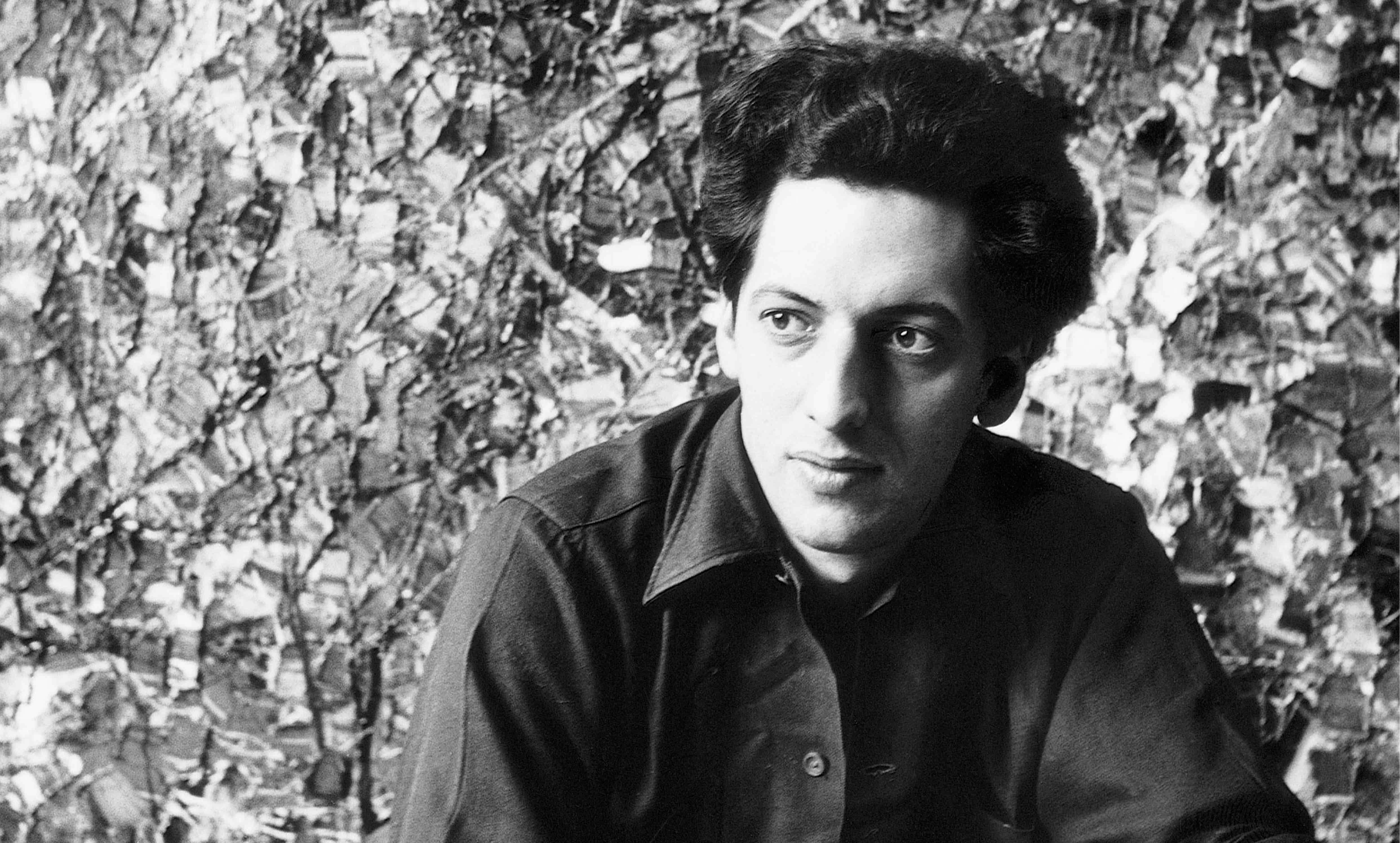
Jean-Paul Riopelle, atelier Durantin, 1952 by John Craven
In Paris, Riopelle turned to Lyrical Abstraction, which enabled him to explore new paths in his practice and experiment with innovative techniques such as impasto, palette knife application, and dripping.
This affiliation gave rise to the pivotal period of the “mosaics” — large-scale paintings executed not with brushes but with palette knives. Applied with a spatula, the paint, used pure and straight from the tube, evokes the fragments of a mosaic.
By the time Rêve enclos II was created, Riopelle had entered a new creative cycle. References to the real world — particularly to nature — became more explicit. The paintings, like their titles, -chosen by the artist, unfold as visual poems, scattering ambiguous images across the surface in layered touches.
“Since there’s no longer a shared symbolic language, another kind of relationship is needed. For me, it’s about contact with nature. And contact with nature means documentation. There are a thousand ways to create, but for me, the simplest is to draw and to research—the nature of stones, if you feel like drawing stones; of heads, if you feel like drawing heads…”
Jean-Paul Riopelle
A constant source of inspiration, nature is never depicted figuratively: it manifests instead as a rhythm, a force, an energy, conveyed through the strokes of the palette knife, which Riopelle stretches and manipulates to produce a variety of forms. The tones overlap without merging, offering the eye rich nuances reminiscent of an Impressionist painting.
The overall composition, seemingly chaotic, is in fact entirely structured by the application of colour. Shades of orange, soft or deep browns, bursts of emerald green and fuchsia appear to hold their place on the canvas with deliberate precision.
A composition at the crossroads of still life and abstract sensation, Rêve enclos II evokes rather than describes — echoing the poem by Émile Nelligan that inspired it and which Riopelle held dear. Its theme subtly reflects Riopelle’s personal life, at a time when he shared a passionate relationship with Joan Mitchell, which had begun two years earlier.
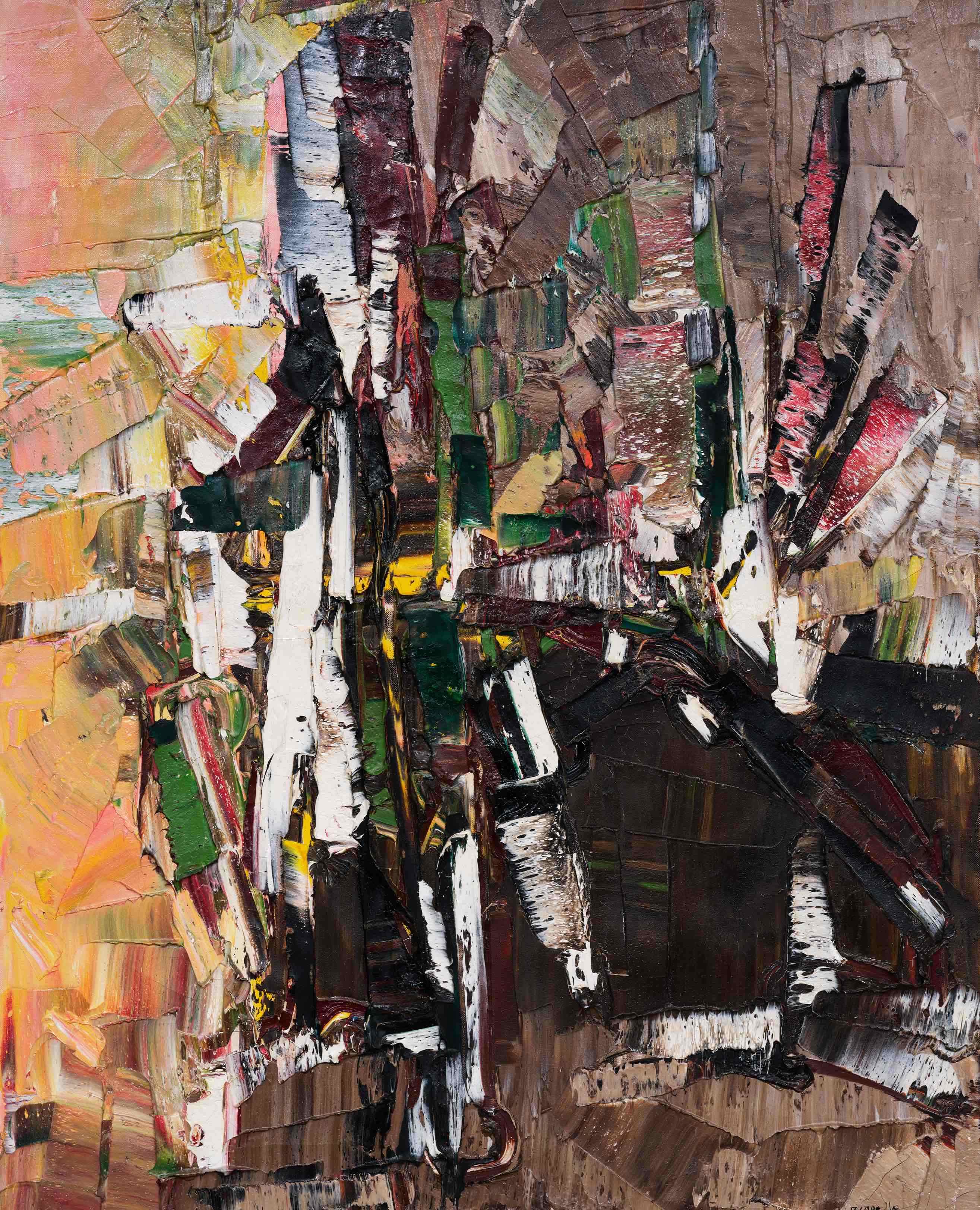
Rêves Enclos, Emile Nelligan
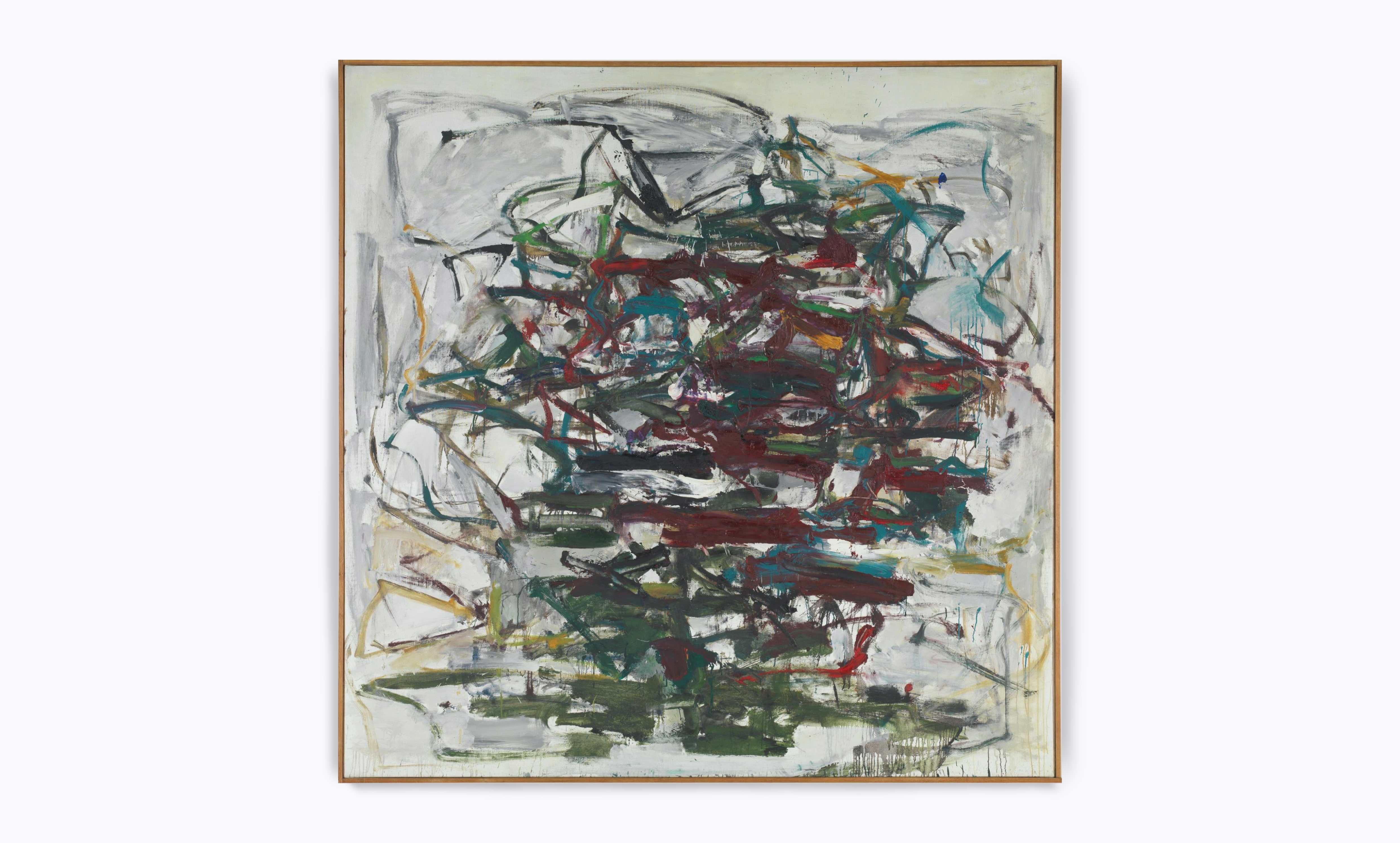
Joan Mitchell, Peinture, 1956-57, oil on canvas, 199.5 x 200 cm © Estate of Joan Mitchell. Crédit photographique : Centre Pompidou, MNAM-CCI/Georges Meguerditchian/Dist. GrandPalaisRmn. Réf. image : 4N81485
The meeting between Riopelle and Joan Mitchell in 1955 was decisive for both of their artistic practices. Together for nearly 25 years, they shared a deep sensitivity to colour and nature, influencing one another without ever merging stylistically.
Through the themes they explored, their works often echo each other, containing a similar expressive power and poetic resonance.
As an emblematic couple of abstract painting, Joan Mitchell stands for American Abstract Expressionism just as Riopelle represents Lyrical Abstraction in France: both are major figures, internationally recognised, whose legacies remain profoundly influential.
Joan Mitchell
Although Jean-Paul Riopelle and Jackson Pollock employed different working methods, American critics often drew comparisons between the two artists, both of whom infused their work with a similar sense of vital energy and freedom.
While Riopelle also made use of the dripping technique, he aligned himself more closely with Monet or Matisse, and with a European pictorial tradition that enabled him to develop a distinctive, deeply personal form of painting — one animated by a profound love of nature and poetry.
In this respect, Riopelle was never purely abstract. His work is powerful, always grounded in reality, offering glimpses of the world through layered touches and evoking universal perceptions.
P. Boudreau, foreword, exhibition catalogue, Riopelle, London, 1959
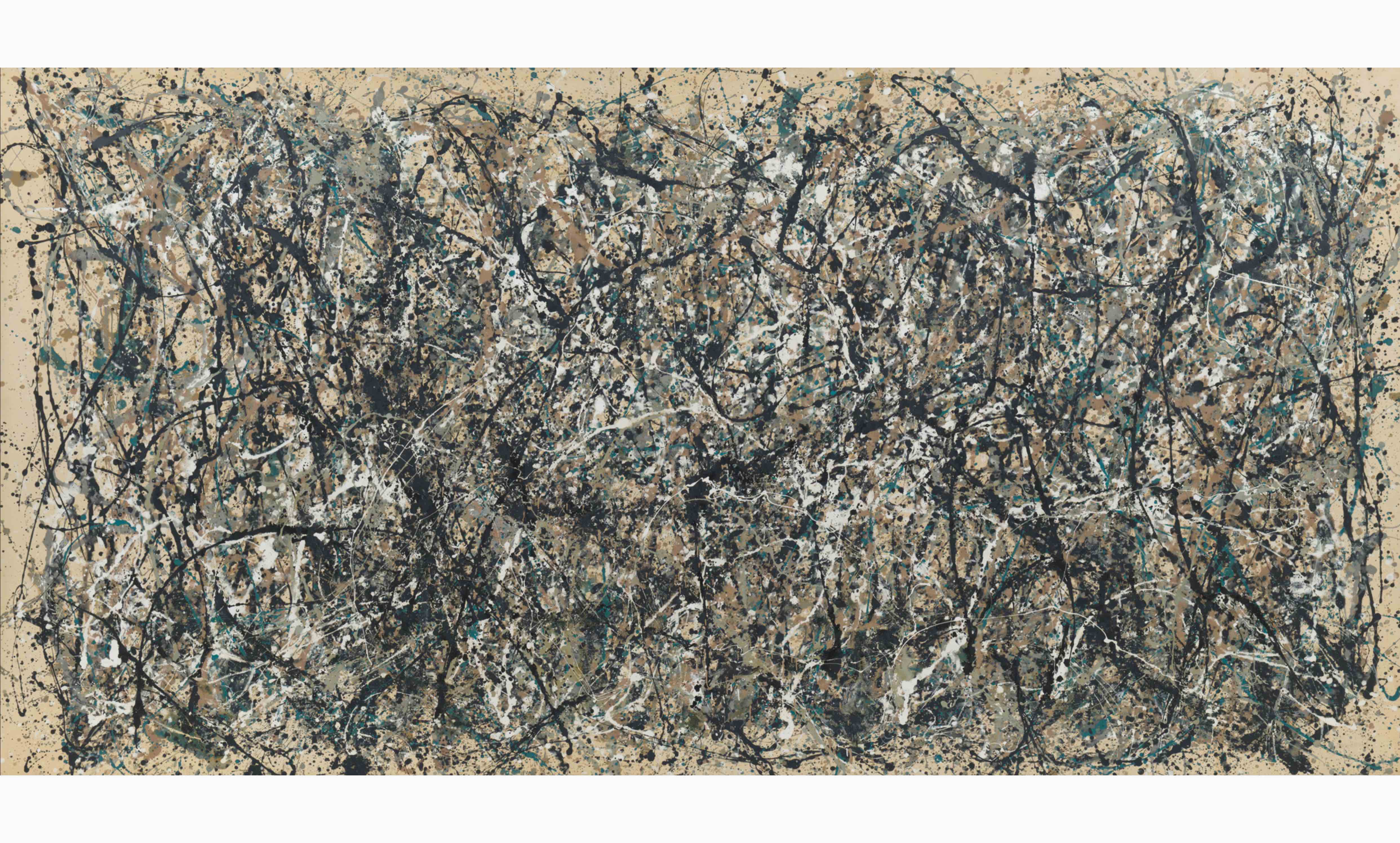
Jackson Pollock, One: Number 31, 1950, 1950, oil and enamel paint on canvas, 269,5 x 530,8 cm. MoMA, Sidney and Harriet Janis Collection Fund (by exchange) © 2025 Pollock-Krasner Foundation / Artists Rights Society (ARS), New York
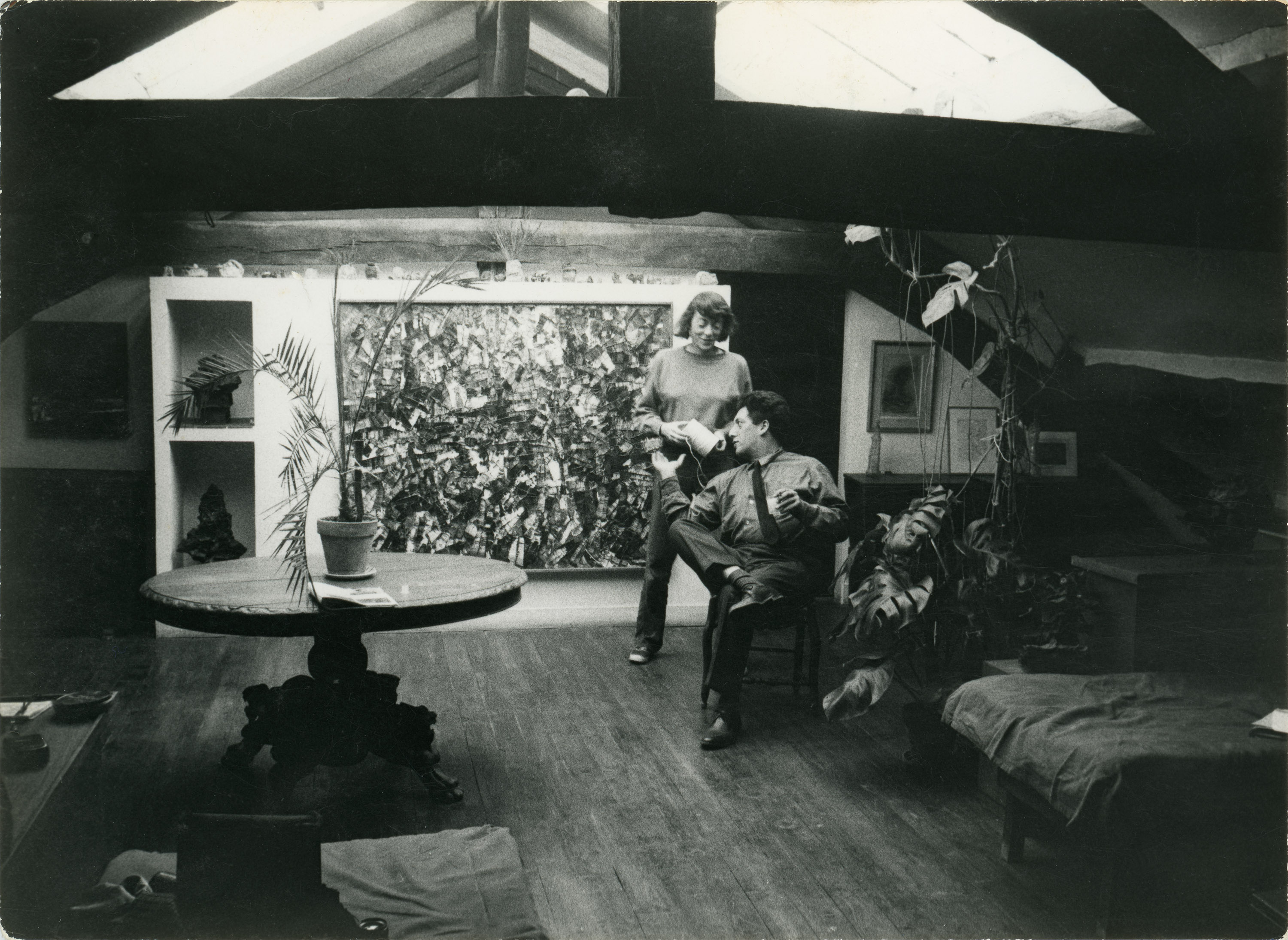
Joan Mitchell and Jean-Paul Riopelle in the living room of the atelier-apartment in rue Frémicourt, Paris, 1963 © Heidi Meister
Born in 1923 in Montreal, Jean-Paul Riopelle is one of the leading figures of post-war abstraction and considered as the most important Canadian painter of the 20th century. Having been briefly associated with the movements of automatism and surrealism, it was in Paris, where he settled in 1947, that he discovered new affinities with the pioneers of lyrical abstraction. Known for his mental landscapes, Riopelle expressed himself through various mediums, including painting, sculpture, and lithography. Nearly twenty years after his death, the Jean Paul Riopelle Foundation was inaugurated in Canada in 2019 to preserve his memory and artistic legacy.